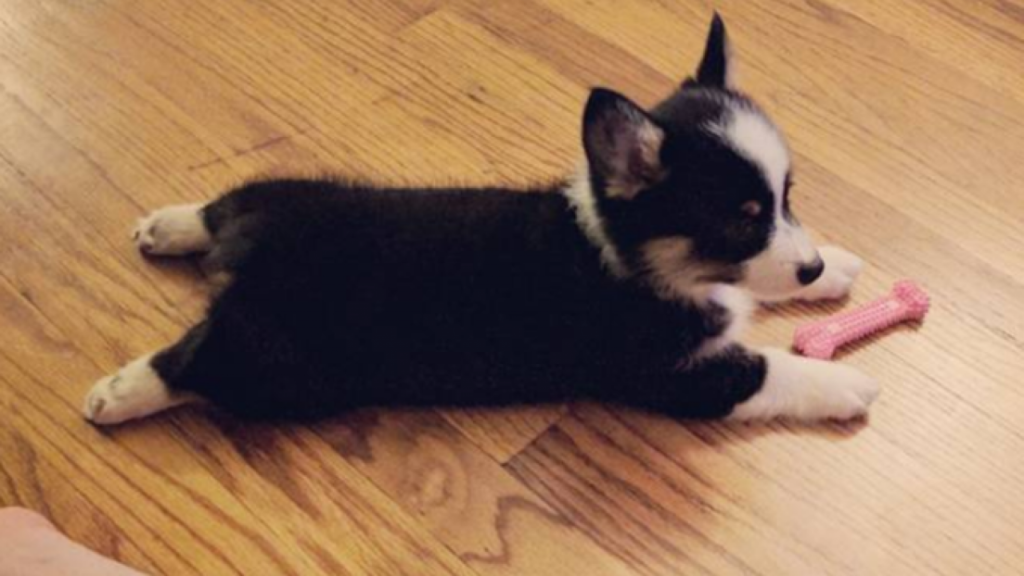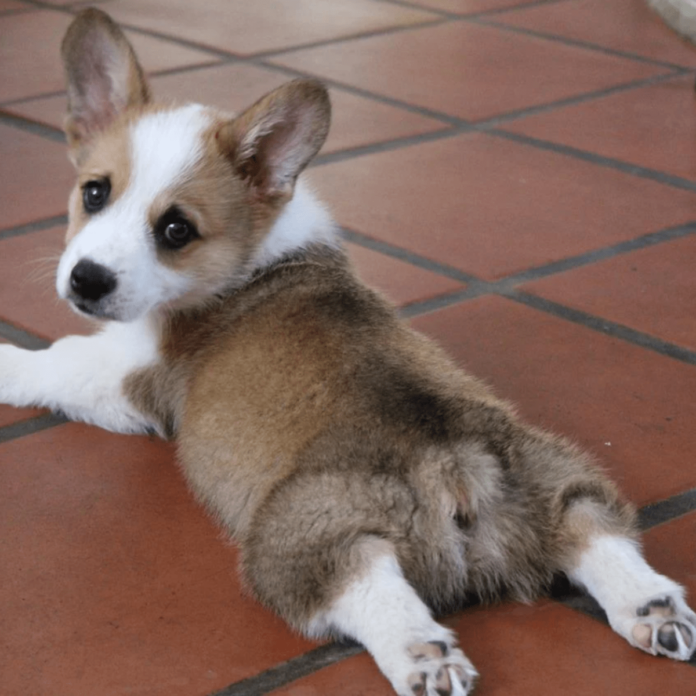Last Updated on November 7, 2023 by Fumipets
What Is a Sploot? And Why Do Cats & Dogs Do It?
Splooting is a charming and somewhat quirky behavior exhibited by both cats and dogs. It involves stretching out their hind legs straight behind them while their front legs remain forward, creating an endearing and often comical posture. While it may seem like a simple stretch, there’s more to it than meets the eye.
What Is a Sploot?
Cute animals, particularly cats and dogs, have been the subject of some of the most popular Internet searches in recent memory. Splooting or frogging is one of the newest cute pet fads to sweep over the internet. When a dog or cat lays out on its tummy and extends its legs behind it, it is said to be splooting.
Although it is really charming to see animals sploot, it also serves a crucial purpose. Discover what splooting is and why certain animals engage in it by reading on.
Splooting Explained
If you’re unfamiliar with the word “sploot,” you’ve undoubtedly seen one or two animals without recognizing it. When a dog or cat spreads out on their stomach, it sploots. They may extend out one or both of their legs from behind, lengthening their whole body.
Half Sploot: One leg is stretched out and one leg remains tucked under the torso
Side Sploot: One leg is stretched out to the side and one leg remains tucked under the torso
Full Sploot: Both legs are stretched out behind the torso
Why “Sploot”?
Even though splooting is a very typical occurrence, some individuals are unaware that the term “sploot” is used to describe it. This is not a technical phrase used by veterinarians, as you may guess from the name.
Instead, it is a phrase that pet owners use online. It’s an onomatopoeia that perfectly captures the adorable tone of the action. Since the animal spreads out like a frog, others prefer the name “frogging” to describe the same occurrence.

Why Cats and Dogs Sploot
There aren’t any known scientific reasons why cats and dogs sploot. It seems that certain animals just like this position of sitting over others. In other words, it just depends on what your pet like.
Theories About Why Animals Sploot
There are a few suggestions to explain why certain pets like to rest in this posture, despite the fact that scientists have not specifically looked into this matter. Among the most popular hypotheses is that it relaxes people, feels cozy, and expands their hips.
Stretches Hips
Although extending your hips may not seem like the most common physical activity, hip mobility is crucial for everyone’s daily life. It is simpler to move about, stroll, and enjoy the day when one’s hips are mobile. Your pets are the same way. In reality, due to the special makeup of their joints, dogs’ hip mobility is crucial.
Some animals are said to sploot in order to extend their hips. Dog and cat hips are positioned differently than ours, making hip problems more prevalent in them. They may be stretched out by splooting. The animal may feel more at ease and mobile in their legs as a result.

Cool Off
Another explanation for animal sploot links body temperature. Since people do not sweat as dogs and cats do, they must discover alternative methods to stay cool. Your pet may be attempting to lower their body temperature if you observe them particularly splooting on hard, cold surfaces, especially in hot weather.
To the touch, many kinds of flooring, including hardwood and tile, seem chilly. Animals may feel more comfortable since their stomachs are cooled down when they sploot over a chilly surface.
It’s Comfortable
The last just plain comfy explanation for why animals sploot. Obviously, if it damaged your pet’s legs or body, they wouldn’t sploot. In light of this, your pet may be splooting only out of preference.
When To See a Vet
If you see your pet splooting, you often have nothing to be concerned about. Splooting, however, may be brought on by a number of illnesses, including hip dysplasia, arthritis, and injury. It’s crucial to take your pet to the doctor if you think they may have any of these ailments.
If your pet has a significant medical problem that needs attention, you may also notice additional symptoms in addition to the splooting. For instance, you should contact the veterinarian if you see that your dog or cat has a limp, rash, reduced appetite, or decreased activity.
If your pet does not exhibit any other symptoms of a significant medical issue, it is probably only stretching out or cooling down, therefore there is no immediate need to visit the veterinarian.

Conclusion
Some cats and dogs engage in the simply cute habit known as splooting. Assume there is nothing to worry about if you see your pet splooting. If you see any more symptoms of sickness, consult the veterinarian. Most likely, your pet is only attempting to feel more at ease.
So, take out your camera and capture this gorgeous pose. If you’d want some lovely bonding time, you could even lay down your pet for the next year while they’re splooting.
Questions and Answers About Splooting:
What is a sploot?
A sploot is a term used to describe the adorable posture in which a cat or dog stretches out their back legs behind them, leaving their belly and chest flat on the ground. The front legs typically extend forward.
Why do cats and dogs sploot?
Splooting is a natural behavior that allows pets to stretch their leg muscles and joints. It’s often seen when they’re trying to cool down or relax after playtime.
Is splooting more common in certain breeds or ages?
While splooting can be observed in various cat and dog breeds, it’s more prevalent in breeds with shorter legs or those known for their playfulness. It’s not necessarily linked to age, as pets of all ages can sploot.
Is splooting a sign of discomfort or a medical issue?
In most cases, splooting is a harmless and delightful behavior. However, if a pet suddenly starts splooting excessively or appears uncomfortable while doing so, it’s advisable to consult a veterinarian to rule out any underlying health issues.
Can splooting be encouraged or discouraged?
Splooting is a natural instinct, and there’s no need to encourage or discourage it. It’s essential to allow your pet to sploot when they feel like it, as it’s a way for them to unwind and maintain their flexibility.
In conclusion, splooting is a charming and endearing behavior that cats and dogs display when they want to stretch and relax. While it’s a natural instinct, it’s crucial to pay attention to your pet’s comfort and overall health if they display unusual splooting behavior.


















